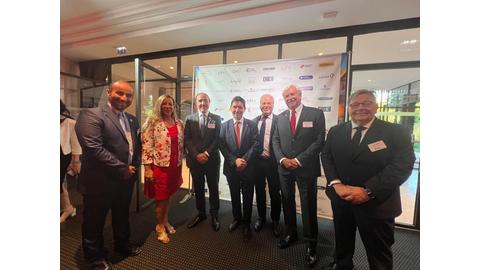GCC countries ‘expected to expand moderately this year’

The Gulf Co-operation Council (GCC) countries are expected to expand moderately this year, according to the latest Economic Insight report, commissioned by Institute of Chartered Accountants in England and Wales (ICAEW) and compiled by Oxford Economics.
However, the anticipated pace of 2023 GDP growth in the region dropped to 1.9 per cent in Q2, down from 2.8pc in the previous quarter, due to the slowdown in energy output.
Although growth expectations for the GCC have been revised downwards for this year, the region’s latest survey indicators reflect ongoing strength. The Q2 report reveals a slight easing in the pace of expansion since the start of the year. However, strong domestic demand continues to drive growth in employment and new orders.
ICAEW’s revised oil price estimates now anticipate Brent averaging $81.5/b this year, down from the previous forecast of $85/b three months ago, while heightened concerns about global demand have prompted deeper production cuts from Opec+ countries. In the June meeting, Saudi Arabia voluntarily agreed to a 1mb/d production cut for the month of July, which may result in a tighter market in the latter half of the year.
The updated Opec+ agreement implies a greater drag on GCC energy output growth this year, weakening it by 2.1pc. While the UAE is expected to experience a rise in production next year, due to a higher supply ceiling aligning with current capacity, most countries in the region are likely to witness stagnation in the sector in 2024.
Non-oil sectors will continue to lead the GCC recovery, projected to grow 3.9pc this year, likely reflecting a resilient domestic market. The travel and tourism sector is also recovering strongly, with Dubai Airport expecting passenger numbers to exceed 2019 levels this year.
The stimulus from tourism, along with a surge in population and support from the government, are reflected in the UAE’s overall economic growth and resilience to global economic headwinds.
The resumption of direct flights between Qatar and Bahrain after a six-year break will reinforce the positive dynamics in the tourism and hospitality sectors. More broadly, FDI inflows are expected to strengthen as geopolitical risk within the Middle East eases, including an agreement to re-establish ties between Saudi Arabia and Iran.
While there have been no changes to regional VAT regimes this year, the UAE began to levy corporate tax at 9pc from June 1. Companies that contribute to the wider public benefit are generally exempt, as are businesses in free zones and investment funds. The exemptions aim to enhance the flexibility of the new tax programme and ensure a supportive business environment. This flexibility and relatively low tax rate could keep the overall economic impact to be modest.
Hanadi Khalife, head of Middle East at ICAEW, said: “While the region’s growth might be slowing down, investments in non-oil sectors are proving critical to Gulf countries’ ability to withstand global economic pressures. Continuing to diversify and increase investment in these sectors, in line with the visions of most countries, will enable the GCC to maintain its consistent growth trajectory.”
Given the GCC central banks largely mirrored the US Federal Reserve’s rate hikes this year, interest rates are expected to remain at their current elevated levels for the remainder of the year. A stronger labour market and inflation data could provide a case for further tightening by the US Fed in the coming months. However, the US Fed is still expected to start cutting rates next year, allowing easing in regional monetary policy, albeit with caution. This means non-oil GDP growth in the GCC will likely continue to slow from an estimated 3.9pc this year to 3.7pc in 2024.
Source: https://www.gdnonline.com/Details/1254539


